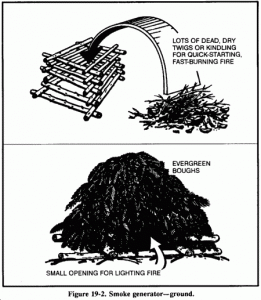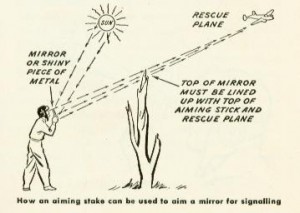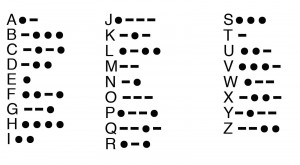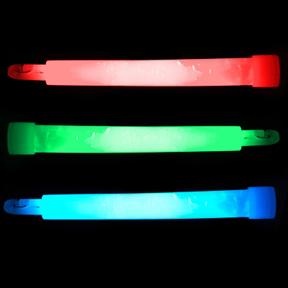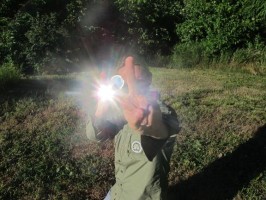 Being prepared for any emergency situation and being able to protect your family does not mean you always have to be the hero. Sometimes, the best way to save yourself and your loved ones is to ask for help. The thing is… you need to know HOW to do it properly, so you get help fast, while using a minimum of resources (both physical resources such as materials or money, and abstract ones such as time and effort).
Being prepared for any emergency situation and being able to protect your family does not mean you always have to be the hero. Sometimes, the best way to save yourself and your loved ones is to ask for help. The thing is… you need to know HOW to do it properly, so you get help fast, while using a minimum of resources (both physical resources such as materials or money, and abstract ones such as time and effort).
This skill gets even more important when you`re stuck in the middle of nowhere and the only help you can hope for is miles away. In this particular case, you need to know how survival signaling works.
First, you need to know there are two types of signaling: visual and audio. Let`s take them one by one and go through different tested techniques that have saved many lives so far.
Visual Signals
There are two types of visual signals: the ones you use during daytime and the ones that work during nighttime.
Here`s what you can do during daytime:
Smoke Signals
Building a smoke generator can be the most efficient way to get help fast. You can use the international distress signal — three columns of smoke — or simply make sure there`s lots an lots of smoke that attracts attention.
If you want the smoke to be more visible, it should contrast with the color of the background. For example, if the background is light-colored, the smoke should be white. To obtain this color, you need to use a pile of green leaves and moss. On the other hand, if you want to create dark smoke, add some plastic or rubber items.
Make sure you and your family protect your airways with t-shirts or bandanas!
Smoke Grenades
If you haven`t packed smoke grenades in your bug-out bag already, you should definitely do so. You`ll have the instruction written on the package, but here`s a couple of rules you need to keep in mind at all times: keep them perfectly dry if you want them to work properly. Also, pay extra attention when you fire them, as they can set fire to vegetation and even to your camp, if you`re not careful.
Star Clusters
Star clusters are great for signaling, as they can reach a height of 200 meters and are usually brightly colored. The best color choice is red (the international distress color), but any other color will do, as well. Star clusters are quite hard to miss, if the timing is good, so use them wisely.
Mirrors
This only works on sunny weather, but if you`re lucky enough to get lots of sunlight, mirrors can become your best friend. If you don’t have a mirror with you, you can use your belt buckle or a tin cup (or any other shiny object).
When you signal, climb to the highest spot in the area, to make sure it`s as visible as possible.
Clothing
I strongly advise you to pack some colorful clothing in your bug-out bag, it might save your life if you`ve got no other way to signal. Here`s what you should do: tie some bright-colored clothes on top of a tree or climb to the highest area and spread them on the ground. Don`t just throw them around. Arrange them to form a large circle, so it can be spotted from a high altitude.
Natural Material
If you haven`t got enough or any bright-colored clothes, you can use surrounding materials to create a signal. For example, you can use large rocks (if you can move them), piles of leaves, fallen trees or whatever else attracts attention. You can also use branches or large leaves to write HELP or SOS.
Now here are the types of signaling that work during nighttime:
Fire
This is the most effective way to signal during nighttime, if you do it right. Don`t worry, you don`t need to be Bear Grylls to manage it, you just need to build three fires in a triangle (the triangle clearly shows you`re in danger and need help). Now, building three fires might not be that hard, but maintaining them could be a pain in the rear end. If there`s no way you can maintain all of them, it`s best to attend to one and let the others die. It`s better to have one string fire then three dying ones.
Another method you can use is set a tree on fire (tree torch). To get the fire started, place some dry wood on the branches you can reach and set those on fire.
Caution: Choose an isolated tree so you don`t start a fire you can`t control!
Flashlight
If you know the Morse Code, you can use a flashlight to send an SOS message. You`ll need a powerful flashlight to get your message through, so make sure you pack one in your bug-out bag and lots of batteries to keep it alive.
If you don`t know the Morse Code, you should learn it asap. It`s an international survival language that can be used with signaling mirrors, flashlights, with sounds and even touch.
Breakable Glow Sticks
Although it`s a one-time use item, glow sticks are great for signaling in the dark. I`ve got two packs of them in my bug-out bag and a couple more in my car. They`re very light and they don`t take up much space, so I advise you to load up on glow sticks, as well.
Now here`s the proper way to signal with glow sticks: tie them to a shoelace or a piece of paracord or rope and then start rotating the string in the air like a lasso. This way, the brightly-colored sticks will be even more visible from above.
Audio Signals
Two-Way Radio
A two-way ready may not be very light on the pocket, but it`s crucial when it comes to bugging-out. You can use it to send and receive messages, which can speed up the rescue or you can at least get medical instructions if you or one of your loved ones is injured.
Here`s how to use two-ways radios most efficiently, according to Wilderness Survival:
- Try to transmit only in clear, unobstructed terrain. Since radios are line-of-sight communications devices, any terrain between the radio and the receiver will block the signal.
- Keep the antenna at right angles to the rescuing aircraft. There is no signal from the tip of the antenna.
- If the radio has tone capability, place it upright on a flat, elevated surface so that you can perform other survival tasks.
- Never let the antenna touch your clothing, body, foliage, or the ground. Such contact greatly reduces the range of the signal.
- Conserve battery power. Turn the radio off when you are not using it. Do not transmit or receive constantly. In hostile territory, keep transmissions short to avoid enemy radio direction finding.
- In cold weather, keep the battery inside your clothing when not using the radio. Cold quickly drains the battery’s power. Do not expose the battery to extreme heat such as desert sun. High heat may cause the battery to explode. Try to keep the radio and battery as dry as possible, as water may destroy the circuitry.
Whistles
Whistles are a great way to let a ground search team know where you are. It won`t work with a rescue aircraft, but if you`re injured or attending to an injured person and you want to let others know where you are, you should blow a whistle three times in a row and then repeat the sequence until they find you.
Gunshots
If you`ve got some ammo to spare, you can use a gun for signaling. Just like with whistles, you should fire three shots in a row, then repeat the sequence.
Horn
The instructions are the same as with whistles and firearms: three times in a row, pause, then repeat.
Caution: Horns can be extremely loud. Protect your ears! If you`ve got kids with you, tell them to take distance and cover their ears until you tell them otherwise.
Source:www.myfamilysurvivalplan.com

